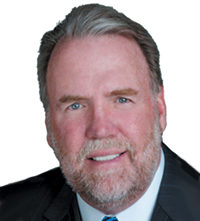A Looming Enterprise Risk
Ignore at your peril.
A leader’s job No. 1 is to identify and navigate what we call enterprise risk. Risk comes in many shapes, sizes and classifications, such as strategic, operational, financial, legal and reputational. There are “blind” risks and “calculated” risks. It is the acceptance of risk that justifies profit. An organization accepts calculated risks and staffs with the appropriate talent to navigate those risks.
Understand that leadership decisions are made in the present and are evaluated in the future, so lead well because you will be judged. I have a concern in our own organization and, by extension, our industry. The COVID-19 pandemic challenged our industry leaders. Most PVF companies survived and, in many cases, prospered as essential employers during the pandemic, followed by the post-COVID pent-up demand. We all came away recalibrated and refocused. In just three years, throughout COVID, we lowered the average age in our company by a decade. Just think: we lowered the average age by 10 years in just 36 months. How is that even mathematically possible?
Here’s how: COVID-19 had numerous employees opting for retirement. These were our 30- and 40-year veterans, those with valuable tribal and institutional knowledge. It is the veterans who were financially “set.” They elected to enjoy the next well-earned life chapter. In addition, while not our intention, if you ever want to thin the ranks, announce an ERP integration … the veterans will run for the door. Further, those retiring 65-year-olds are not replaced with 55-year-olds, but rather 20-somethings.
Give me a minute here to lay a foundation. The average bull market is 3.8 years. However, the last bull market leading into the pandemic lasted three times the average. This led to an emerging narrative that bear markets may be a thing of the past and recessions were obsolete. Simply not true.
Historically, our industry suggests that over every 10 years, we have two years where we are knocking the cover off the ball, two years where we think we are going out of business, and six years that are let’s say, OK. However, due to the aforementioned “essential employer status” and the pent-up demand of the COVID era, we are well beyond our two great years run and still going strong. But there are indeed storm clouds somewhere in our future.
Now let’s consider the perfect storm. Veterans leave, institutional knowledge is less and the traditional work model is shattered. Talented newbies come in with great enthusiasm and ambition. The newbies have so far navigated the career journey of running departments, regions and even branches. They are the ones targeted and even anointed for greatness. Yet the enterprise risk is that many of those have not yet experienced a market correction. It’s the classic “They don’t know what they don’t know.”
This begs the question, are they emotionally and strategically prepared to lead through an industry correction? Do they have the required skill set? Have we prepared them? What happens when expenses need to be cut by X percent across the board? Are they equipped to let someone go who has done nothing wrong? We veterans know that leadership, especially in a cyclical industry such as ours, is very much a contact sport. While cybersecurity and other risk concerns keep us awake at night, should not the question of our younger leader’s adequate preparation and resume gaps be on our minds? Is this not perhaps our industry’s not so clear, but present danger? While we seek to protect our organizations from outside threats and work hard to build a protective moat around our companies, perhaps the bigger risk is the risk from within.
Look, you’re running a successful business. I know this given the challenges of terrorist attacks, protracted recession, pandemics, unprecedented supply chain challenges, talent shortages and wars, yet here you stand. You’re still here because you know professional leadership is the premeditated, preemptive preparation of the inevitable. I can’t tell you when a correction will occur, especially in a hotly contested election year with polls running neck and neck. But I do know just as bear markets are not a thing of the past, our industry will remain cyclical.
So, in the words of NHL great Wayne Gretzky, “Don’t skate to where the puck is, skate to where the puck will be.” With this in mind, in advance of a market correction that will challenge us, let us prepare these young men and women. Mentor them, hold their hands, and walk them through the preparation of a contingency plan. Modeling such in advance and having it in the desk drawer at the ready will prove to be a competitive advantage when the time comes.
“If you are the smartest person in the room, then you are in the wrong room.” — Confucius





